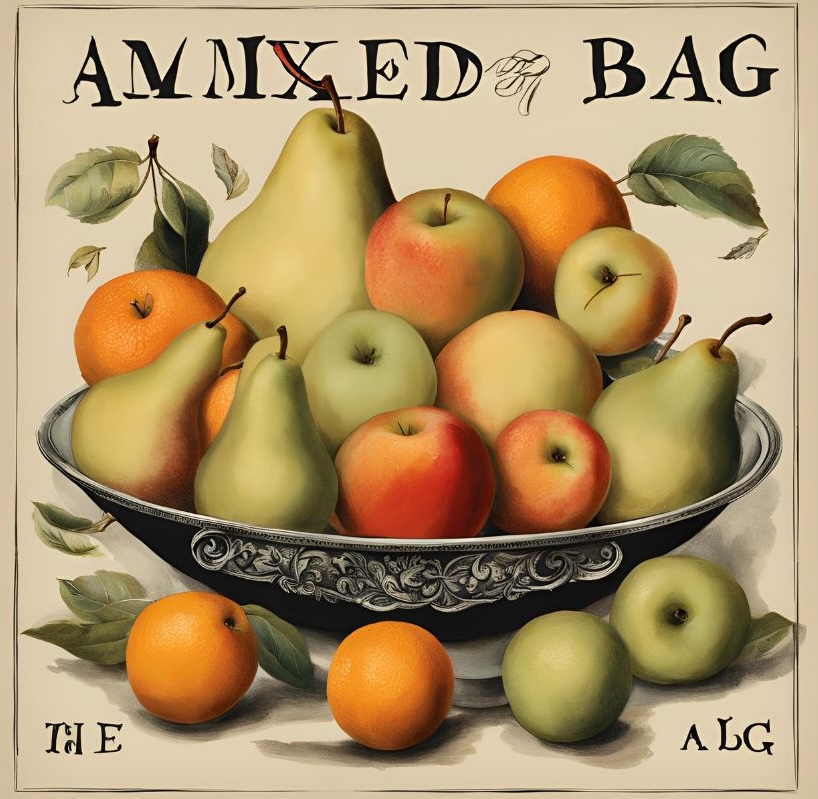[ad_1]
Schizophrenia is a extreme psychological well being situation which impacts roughly 24 million individuals worldwide (World Well being Organisation, 2022). Although its presentation can differ from one individual to a different, it usually contains signs of delusions and hallucinations, alongside emotional dysfunction, impaired social functioning, and considering difficulties (American Psychiatric Affiliation, 2013).
Antipsychotic medicines are the first remedy approaches, nevertheless, an estimated one-third of individuals dwelling with schizophrenia are reported to have ‘treatment-resistant schizophrenia’ (Diniz et al., 2023; Chan et al., 2021). Remedy-resistant schizophrenia (TRS) is usually understood as a failure to reply to at the very least two trials of antipsychotic remedy administered at an ample dose and period (Polese et al., 2019). Usually, antipsychotics are prescribed as optimum therapies, however individuals can expertise undesirable remedy side-effects akin to weight acquire (Dong et al., 2024).
Discussions of non-medication-based interventions for TRS, together with psychological and psychosocial interventions, have acquired comparatively much less consideration. When they’re offered, psychological and psychosocial interventions are usually supplied alongside remedy. Whereas there are a number of efficacious psychological interventions in psychosis, akin to cognitive behavioural remedy and household interventions (Nationwide Institute for Well being and Care Excellence, 2014), it could be useful to know extra about their efficacy, acceptability, and tolerability in people with TRS.
Salahuddin et al. (2024) sought to deal with this problem by conducting a scientific evaluation and the primary community meta-analysis of psychological and psychosocial interventions for TRS. This weblog critiques their findings with consideration of wider implications.

Remedy-resistant schizophrenia is usually understood as a failure to reply to at the very least two trials of antipsychotic remedy administered at an ample dose and period.
Strategies
Of their systematic evaluation, Salahuddin et al. (2024) searched 11 databases and registries for printed and unpublished randomised managed trials (RCTs). Research had been included in the event that they in contrast psychological and psychosocial interventions with remedy as standard, waiting-list controls, or inactive controls. Individuals within the included research had been described as treatment-resistant primarily based on the definition given by the respective authors. There have been no restrictions on publication date, nation, setting, language, ethnicity, or gender. Research had been excluded in the event that they included members with psychiatric comorbidities. The first final result measured was the general signs of schizophrenia.
A community meta-analysis was then carried out to check the effectiveness of assorted psychological and psychosocial interventions. Moreover, a random-effects pairwise meta-analysis was carried out to judge outcomes, together with total signs, high quality of life, and remedy hostile occasions.
Outcomes
The database searches recognized 30,326 information. Following title and summary screening, 5,762 full texts had been screened for eligibility. The included research had a pattern measurement of 5,034 members with TRS and built-in information from 52 research, which assessed 20 totally different psychological and psychosocial interventions.
For the community meta-analysis, 31 research with 12 interventions had been analysed to find out the end result of total signs. For every intervention sort, the standardised imply distinction was measured between the intervention and remedy as standard.
- The community meta-analysis recognized music remedy as having the largest impact measurement for decreasing total signs of TRS. It resulted in a standardised imply distinction (SMD) of –1.27 (95% CI –1.83 to –0.70), however this was primarily based on a single trial involving 41 members (Yang et al., 1998), so these findings are usually not dependable.
- Built-in interventions (i.e., a mix of a number of therapies) and digital actuality interventions had been efficient, with SMDs of –0.70 (95% CI –1.18 to –0.22) and –0.41 (95% CI –0.79 to –0.02), primarily based on three and 4 trials, respectively.
- Cognitive Behavioural Remedy for Psychosis (CBTp) had a smaller impact measurement (SMD –0.22, 95% CI –0.35 to –0.09) however was supported by the most important physique of proof, with 1,835 members concerned in these mixed trials. Nonetheless, no CBTp research utilizing a stringent definition of remedy resistance had been obtainable. Moreover, in eight TRS research the place at the very least two antipsychotics had been trialled and had been ineffective, no clear variations between CBTp and remedy as standard had been noticed (SMD –0.16, 95% CI –0.54 to 0.23).
Sensitivity evaluation was carried out to evaluate the robustness of findings, and subgroup evaluation was carried out to evaluate the stringency of the TRS criterion as a moderator. Outcomes from each the subgroup and sensitivity analyses confirmed congruent outcomes with the principle evaluation, whereby CBTp, built-in interventions, and digital actuality remedy had been efficient when in comparison with remedy as standard.
- Household intervention, metacognitive coaching, built-in interventions, digital actuality intervention, and CBTp could assist with the constructive signs of schizophrenia.
- In distinction, CBTp, music remedy, occupational remedy, and body-oriented intervention could assist with damaging signs.
When it comes to acceptability, for many interventions there have been greater numbers of participant dropouts when in comparison with remedy as standard. Research offered restricted information on hostile occasions associated to the psychological interventions, so evaluation was not doable.

This evaluation discovered extra research on CBT for psychosis than some other psychosocial interventions. In a area dominated by remedy, many unanswered questions stay about one of the best methods to assist individuals.
Conclusions
Salahuddin and colleagues (2024) counsel that CBTp needs to be prioritised as an add-on remedy to remedy for individuals with TRS. Among the many interventions studied, CBTp was the only real intervention supported by information from a big physique of research with a number of members. Along with bettering total signs, members in these research additionally reported a greater high quality of life.
The Salahuddin et al. (2024) community meta-analysis additionally exhibits that CBTp had an influence on constructive signs (i.e., hallucinations and delusions), however was much less efficient for damaging signs akin to lack of motivation or pleasure.
Whereas CBTp stands out as an efficient possibility, different varieties of interventions akin to digital actuality remedy and built-in approaches present promise. Nonetheless, the amount of research and information are usually not adequate to attract robust conclusions at this stage.

The authors concluded that CBTp needs to be prioritised as an add-on remedy to remedy for individuals with treatment-resistant schizophrenia.
Strengths and limitations
Salahuddin et al.’s (2024) research is the primary community meta-analysis to offer a complete image of analysis to this point demonstrating the efficacy, acceptability, and tolerability of psychosocial and psychological interventions for individuals with schizophrenia whose signs are outlined as ‘remedy resistant’. Using a community meta-analysis supplies a sturdy methodology, permitting for the comparability of interventions concurrently, even when direct head-to-head comparisons are usually not obtainable.
Whereas there are clear strengths from the current research, limitations are additionally evident. One pertains to the lack of a standardised definition of ‘treatment-resistant schizophrenia (TRS)’ throughout the included research. This will trigger heterogeneity throughout the information, affecting the generalisability of findings. The generalisability of findings was additionally affected by the restricted information on therapies aside from CBTp. A number of interventions had been supported by solely a small variety of research and even only one. For instance, the findings on music remedy, although promising, come from a single small research of 41 members.
Notably, potential hostile and dangerous results of intervention varieties and dropout charges weren’t recognized on this community meta-analysis. This is a vital omission for a number of causes. For instance, greater dropout charges in psychological interventions when in comparison with remedy as standard may counsel that these therapies may be troublesome for some individuals to have interaction with, which might restrict their real-world applicability. As discussions round iatrogenic hurt and the potential risks of psychological therapies come to the forefront (Parry et al., 2016), additionally it is crucial that the potential dangers of psychological interventions are reported in analysis.
Ethnicity information within the included research was restricted. Thus, it’s troublesome to find out whether or not intervention results are related throughout totally different ethnic teams. That is particularly salient as some racially minoritised teams, for instance these from Black ethnic minority backgrounds, are disproportionately recognized with schizophrenia at greater charges in some areas throughout the globe (Anglin et al., 2023). In consequence, the research’s findings could not precisely replicate the experiences or outcomes for these populations.
Lastly, this research didn’t think about individuals with lived expertise of TRS, whose views might have added a wealthy layer of understanding about how these therapies are perceived and what sensible challenges include them. Partaking individuals with lived expertise in psychiatric analysis is important to keep away from energy discrepancies and lacking narratives (Hawke et al., 2022). With out their involvement, worthwhile insights are misplaced, and data trade is proscribed. Together with individuals with lived expertise in all levels of analysis – from conception to supply – not solely enhances knowledge-sharing however can be central to stigma discount (Thornicroft et al., 2022).

The dearth of a standardised definition of treatment-resistant schizophrenia throughout included research may cause heterogeneity throughout the information, affecting the generalisability of findings.
Implications for apply
Salahuddin et al.’s (2024) evaluation highlights the potential of rising interventions like digital actuality remedy and built-in interventions. Accordingly, a latest evaluation by Imogen Bell et al. (2024) means that digital reality-based therapies can successfully handle psychosis signs akin to paranoia and auditory hallucinations, and people with lived expertise of psychosis report constructive attitudes in the direction of utilizing a digital atmosphere. Whereas the proof is just not as established for these therapies as it’s for CBTp, they’re nonetheless price contemplating.
Clinicians may also have to mix therapies to deal with the complete spectrum of schizophrenia signs and their impacts. This opens the door for future analysis into therapies particularly concentrating on damaging signs, which have been recognized as important remedy targets for bettering functioning (i.e., each day dwelling actions akin to self-care, social participation, and employment; Bighelli et al., 2022) in people with TRS (Li et al., 2024). For instance, Staring et al. (2013) discovered that cognitive behavioural remedy for damaging signs appeared to be efficient in decreasing damaging signs in a research involving 21 grownup outpatients with schizophrenia spectrum problems. Moreover, a evaluation by Muyambi et al. (2023) indicated that behavioural activation might improve motivation and temper in adults with damaging signs by encouraging engagement in significant actions. Nonetheless, it is very important notice that there have been solely two research included in Muyambi et al.’s (2023) evaluation, and each had small pattern sizes and had been outlined as being of low high quality on a top quality appraisal measure (Choi et al., 2016; Mairs et al., 2011), thus underscoring the necessity for additional analysis on this space.
The implementation of psychological interventions, akin to CBTp, is prone to include a variety of challenges. For instance, within the UK, amongst these challenges is the very fact the proportion of the NHS England funds spent on psychological well being has decreased since 2016/17 (British Medical Affiliation, 2024). A scientific evaluation by Burgess-Barr et al. (2023) additionally discovered that entry to really useful psychological therapies for psychosis stays low throughout Europe, North America, and Australia, with organisational, employees, and repair consumer obstacles. In consequence, assets and capability in lots of psychological well being companies are restricted. As well as, there are stark inequities in accessing psychological remedy amongst marginalised teams worldwide. For example, in low- and middle-income nations, a extreme scarcity of psychological well being specialists signifies that 69% of individuals with schizophrenia in these nations can’t entry evidence-based care, a disparity often called the ‘remedy hole’ (Lora et al., 2012). Vital consideration of those limitations is important previous to implementation.
General, this evaluation supplies perception into what approaches may be useful in supporting the not insignificant variety of individuals dwelling with TRS. Nonetheless, it additionally exhibits that there’s nonetheless a lot to discover and refine. There’s a continued want to determine sturdy evidence-based interventions for individuals dwelling with TRS.

Clinicians may also want to mix therapies to deal with the complete spectrum of schizophrenia signs and their impacts.
Authorship
This work represents equal contribution from Kalya Aung, Angela Kibia, and Dorothy Williams (contributors represented alphabetically), supported by Dr Juliana Onwumere.
Assertion of pursuits
Now we have no conflicting pursuits linked to the research.
Hyperlinks
Major paper
Salahuddin, N. H., Schütz, A., Pitschel-Walz, G., Mayer, S. F., Chaimani, A., Siafis, S., Priller, J., Leucht, S., & Bighelli, I. (2024). Psychological and psychosocial interventions for treatment-resistant schizophrenia: a scientific evaluation and community meta-analysis. The Lancet Psychiatry, 11(7), 545-553. https://doi.org/10.1016/S2215-0366(24)00136-6
Different references
American Psychiatric Affiliation. (2013). Diagnostic and statistical handbook of psychological problems (fifth ed.). https://doi.org/10.1176/appi.books.9780890425596
Anglin DM, Lui F. Racial microaggressions and main discriminatory occasions clarify ethnoracial variations in psychotic experiences. Schizophrenia Analysis. 2023 Mar 1;253:5-13.
Bell, I. H., Pot-Kolder, R., Rizzo, A., Rus-Calafell, M., Cardi, V., Cella, M., Ward, T., Riches, S., Reinoso, M., Thompson, A., Alvarez-Jimenez, M., & Valmaggia, L. (2024). Advances in using digital actuality to deal with psychological well being situations. Nature Evaluations Psychology, 3(8), 552-567. https://doi.org/10.1038/s44159-024-00334-9
Bighelli, I., Wallis, S., Reitmeir, C., Schwermann, F., Salahuddin, N. H., & Leucht, S. (2022). Results of psychological therapies on functioning in individuals with Schizophrenia: a scientific evaluation and meta-analysis of randomized managed trials. European Archives of Psychiatry and Medical Neuroscience, 273(4), 779-810. https://doi.org/10.1007/s00406-022-01526-1
British Medical Affiliation. (2024, October 4). Psychological well being pressures information evaluation. The British Medical Affiliation. https://www.bma.org.uk/advice-and-support/nhs-delivery-and-workforce/pressures/mental-health-pressures-data-analysis
Burgess-Barr, S., Nicholas, E., Venus, B., Singh, N., Nethercott, A., Taylor, G., & Jacobsen, P. (2023). Worldwide charges of receipt of psychological remedy for psychosis and schizophrenia: systematic evaluation and meta-analysis. Worldwide Journal of Psychological Well being Programs, 17(1), 8. https://doi.org/10.1186/s13033-023-00576-9
Chan, S. Okay. W., Chan, H. Y. V., Honer, W. G., Bastiampillai, T., Suen, Y. N., Yeung, W. S., Lam, M., Lee, W. Okay., Ng, R. M. Okay., Hui, C. L. M., Chang, W. C., Lee, E. H. M., & Chen, E. Y. H. (2020). Predictors of Remedy-Resistant and Clozapine-Resistant schizophrenia: A 12-Yr follow-up research of First-Episode Schizophrenia-Spectrum problems. Schizophrenia Bulletin, 47(2), 485-494. https://doi.org/10.1093/schbul/sbaa145
Choi, Okay. H., Jaekal, E., & Lee, G. Y. (2016). Motivational and Behavioral Activation as an Adjunct to Psychiatric Rehabilitation for Gentle to Average Unfavourable Signs in People with Schizophrenia: A Proof-of-Idea Pilot Examine. Frontiers in psychology, 7, 1759. https://doi.org/10.3389/fpsyg.2016.01759
Diniz, E., Fonseca, L., Rocha, D., Trevizol, A., Cerqueira, R., Ortiz, B., Brunoni, A. R., Bressan, R., Correll, C. U., & Gadelha, A. (2023). Remedy resistance in schizophrenia: a meta-analysis of prevalence and correlates. Revista brasileira de psiquiatria (Sao Paulo, Brazil : 1999), 45(5), 448–458. https://doi.org/10.47626/1516-4446-2023-3126
Dong, S., Schneider-Thoma, J., Bighelli, I., Siafis, S., Wang, D., Burschinski, A., Schestag, Okay., Samara, M., & Leucht, S. (2023). A community meta-analysis of efficacy, acceptability, and tolerability of antipsychotics in treatment-resistant schizophrenia. European Archives of Psychiatry and Medical Neuroscience. https://doi.org/10.1007/s00406-023-01654-2
Hawke, L. D., Sheikhan, N. Y., Jones, N., Slade, M., Soklaridis, S., Wells, S., & Fortress, D. (2022). Embedding lived expertise into psychological well being educational analysis organizations: crucial reflections. Well being Expectations, 25(5), 2299-2305. https://doi.org/10.1111/hex.13586
Li, Y., Ang, M. S., Yee, J. Y., See, Y. M., & Lee, J. (2024). Predictors of functioning in treatment-resistant schizophrenia: the function of damaging signs and neurocognition. Frontiers in Psychiatry, 15, 1444843. https://doi.org/10.3389/fpsyt.2024.1444843
Lora, A., Kohn, R., Levav, I., McBain, R., Morris, J., & Saxena, S. (2012). Service availability and utilization and remedy hole for schizophrenic problems: a survey in 50 low- and middle-income nations. Bulletin of the World Well being Group, 90(1), 47–54B. https://doi.org/10.2471/BLT.11.089284
Mairs, H., Lovell, Okay., Campbell, M., & Keeley, P. (2011). Improvement and Pilot Investigation of Behavioral Activation for Unfavourable Signs. Habits Modification, 35(5), 486-506. https://doi.org/10.1177/0145445511411706
Muyambi, Okay., Walsh, S., Bressington, D., Grey, R., Dennis, S., Brown, E., Grimshaw, M., Drummond, J., & Jones, M. (2023). Efficacy of behavioural activation within the remedy of damaging signs in individuals with schizophrenia spectrum problems: A scientific evaluation. Worldwide journal of nursing research advances, 5, 100132. https://doi.org/10.1016/j.ijnsa.2023.100132
Nationwide Institute for Well being and Care Excellence. Psychosis and schizophrenia in adults: prevention and administration. (Medical guideline 178.) 2014. https://www.nice.org.uk/guidance/cg178
Parry, G. D., Crawford, M. J., & Duggan, C. (2016). Iatrogenic hurt from psychological therapies – time to maneuver on. British Journal of Psychiatry, 208(3), 210–212. https://doi.org/10.1192/bjp.bp.115.163618
Polese, D., Fornaro, M., Palermo, M., De Luca, V., & de Bartolomeis, A. (2019). Remedy-Proof against Antipsychotics: A Resistance to The whole lot? Psychotherapy in Remedy-Resistant Schizophrenia and Nonaffective Psychosis: A 25-Yr Systematic Assessment and Exploratory Meta-Evaluation. Frontiers in Psychiatry, 10, 210. https://doi.org/10.3389/fpsyt.2019.00210
Staring, A. B., Ter Huurne, M. A. B., & van der Gaag, M. (2013). Cognitive Behavioral Remedy for damaging signs (CBT-n) in psychotic problems: a pilot research. Journal of Habits Remedy and Experimental Psychiatry, 44(3), 300-306. https://doi.org/10.1016/j.jbtep.2013.01.004
Thornicroft, G., Sunkel, C., Alikhon Aliev, A., Baker, S., Brohan, E., El Chammay, R., Davies, Okay., Demissie, M., Duncan, J., Fekadu, W., Gronholm, P. C., Guerrero, Z., Gurung, D., Habtamu, Okay., Hanlon, C., Heim, E., Henderson, C., Hijazi, Z., Hoffman, C., Hosny, N., … Winkler, P. (2022). The Lancet Fee on ending stigma and discrimination in psychological well being. Lancet (London, England), 400(10361), 1438–1480. https://doi.org/10.1016/S0140-6736(22)01470-2 World Well being Group. (2022, January 10). Schizophrenia. World Well being Group; World Well being Group. https://www.who.int/news-room/fact-sheets/detail/schizophrenia
Yang, W. Y., Zheng, L., Yong Zhen, W., Zhang, H., Y., Bio, M. (1998). Psychosocial rehabilitation results of music remedy in power schizophrenia. Hong Kong Journal of Psychiatry, 8(1), 38.
Photograph credit
[ad_2]
Source link

